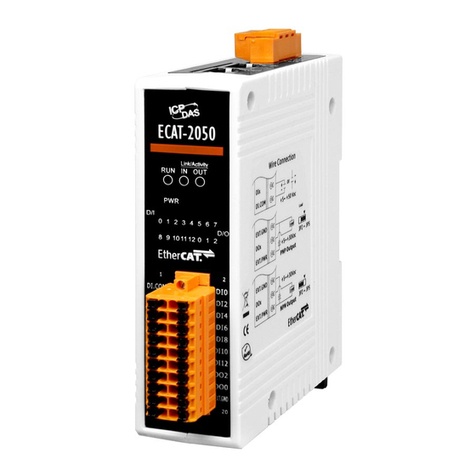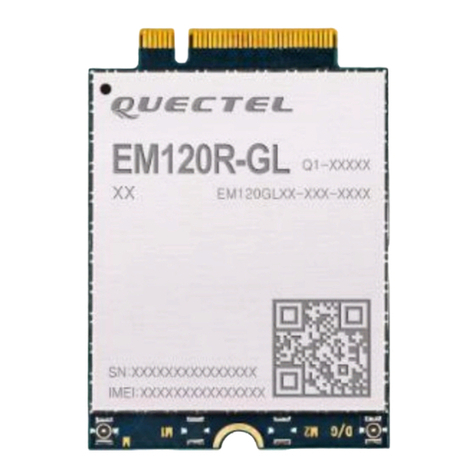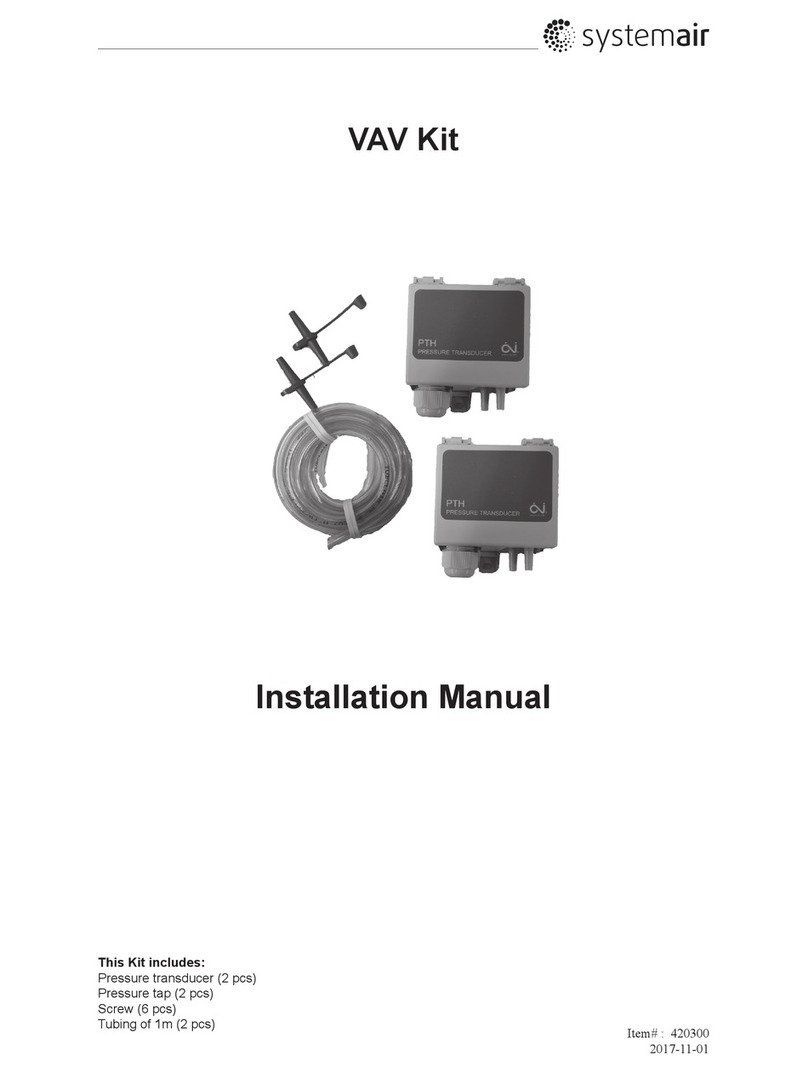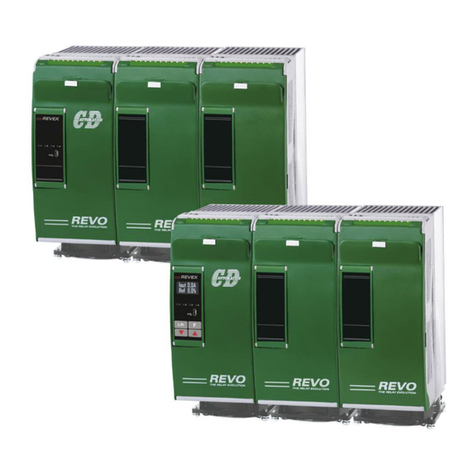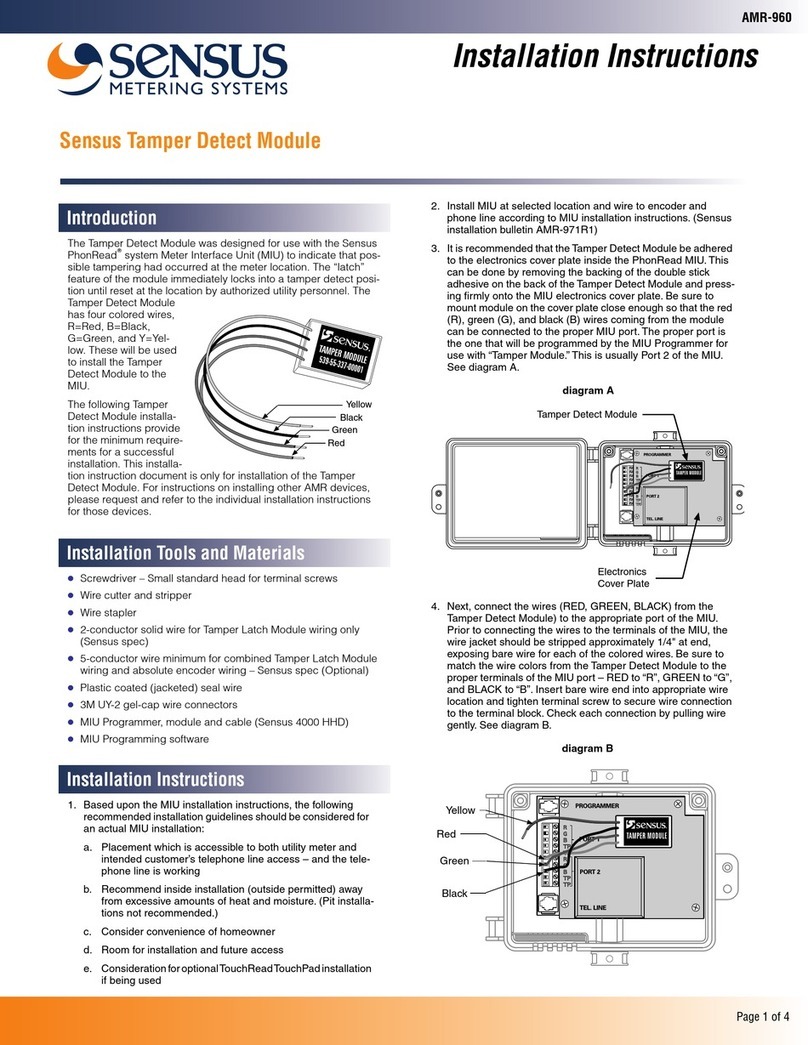Electroline Control Unit IV User manual

Control Unit IV
Reference Manual
Publication Number: 529-0004 Ver.3
Product Version: 3.30 or higher
Date: December 2001

This document provides information proprietary to Electroline Equipment Inc. and cannot be used or disclosed
without Electroline’s written authorization.
Electroline Equipment Inc. reserves the right to make changes without notice in its products or components as
research and development or marketing conditions warrant. Changes affecting the operation of any component in this
manual will be reflected in a subsequent revision. Electroline Equipment Inc. assumes no responsibility for any
omissions or errors that may appear in this document or for any damages that may result from the use of information
contained herein.
The following are trademarks of Electroline Equipment Inc.: Electroline, EAS Control Unit IV, CLEARPath, TPS,
TPS Control Software.
Other registered trademarks used in this manual (HyperTerminal, Windows 95, Procomm, Workabout, etc.) are the
exclusive property of their owner.
Electroline Equipment Inc.
Research and Development –Technical Publications
8265 St-Michel Boulevard
Montréal, Québec
CANADA H1Z 3E4
Technical support
If you have questions or require technical information, please contact Electroline Equipment Inc.’s
technical support department by telephone, fax or electronic mail.
Telephone: (514) 374-6335 (in the Montréal area)
Toll free: 1-800-461-3344 (elsewhere in Canada and the U.S.)
Fax: (514) 374-2257
E-mail address: support@electroline.com
Products and services
To find out more about our products, visit our Web site at www.electroline.com or write to us at
Warranty and repairs
For warranty, repair or return information, please visit our Web site at www.electroline.com.
Control Unit IV Reference Manual
Publication No.: 529-0004 Ver.3
First edition: December 1998
Second edition (revised): December 2000
Third edition (revised): December 2001
All rights reserved
Copyright © 1998, 2000, 2002 Electroline Equipment Inc.
Montréal, Canada

Control Unit IV Reference Manual
529-0004 Ver.3 i
Contents
About this manual................................................................................................................vi
Conventions....................................................................................................................... vii
1. PRODUCT DESCRIPTION 1-1
1.1 General introduction ................................................................................................. 1-1
1.1.1 Carrier options................................................................................................ 1-1
1.1.2 Compatibility with previous versions............................................................. 1-2
1.1.3 Certifications .................................................................................................. 1-2
1.2 Roles ........................................................................................................................ 1-2
1.2.1 Subscriber tier management ........................................................................... 1-2
1.2.2 Return path monitoring................................................................................... 1-4
1.3 Features..................................................................................................................... 1-5
1.3.1 Billing system and host computer interfaces.................................................. 1-5
1.3.2 Tiering systems............................................................................................... 1-5
1.3.3 Subscriber capacity......................................................................................... 1-6
1.3.4 Redundancy system ........................................................................................ 1-7
1.3.5 Diagnostics..................................................................................................... 1-7
1.3.6 Upgradability.................................................................................................. 1-7
1.4 Physical characteristics ............................................................................................. 1-8
1.4.1 Enclosure........................................................................................................ 1-8
1.4.2 Internal features .............................................................................................. 1-9
1.5 Reference................................................................................................................. 1-11
2. INSTALLATION 2-1
2.1 Handling....................................................................................................................2-1
2.2 Precautions................................................................................................................ 2-1
2.3 Mounting the unit...................................................................................................... 2-2
2.3.1 Hardware requirements................................................................................... 2-2
2.3.2 Mounting the unit in a rack............................................................................. 2-2
2.4 Setting up the host computer..................................................................................... 2-3
2.4.1 Using HyperTerminal to set up a link with the Control Unit......................... 2-3
2.4.2 Using the Workabout to set up the Control Unit............................................ 2-6
2.5 Setting up a modem................................................................................................... 2-7
2.6 Cable assemblies and applications............................................................................ 2-8
2.7 Connecting the Control Unit..................................................................................... 2-9
2.7.1 Connecting the Control Unit to the host computer or modem ..................... 2-10
2.7.2 Connecting the Control Unit to the CATV network..................................... 2-11
2.7.3 Connecting the Control Unit’s test ports...................................................... 2-11
2.7.4 Connecting the Control Unit’s power cord................................................... 2-11
2.7.5 Connecting a master unit to a backup unit ................................................... 2-12
2.7.6 Connecting the Control Unit for setup ......................................................... 2-14

Control Unit IV Reference Manual
ii 529-0004 Ver.3
3. SETUP 3-1
3.1 COM port characteristics...........................................................................................3-1
3.2 COM port protocols...................................................................................................3-2
3.2.1 Terminal protocol............................................................................................3-2
3.2.2 Packet-switched protocols...............................................................................3-2
3.3 Access levels..............................................................................................................3-3
3.3.1 Limited access.................................................................................................3-4
3.3.2 Full access.......................................................................................................3-4
3.3.3 Logging off a session ......................................................................................3-5
3.4 Viewing the unit’s setup............................................................................................3-6
3.5 Starting a setup session..............................................................................................3-7
3.6 Setup procedure .........................................................................................................3-8
3.6.1 Logging on with a password ...........................................................................3-8
3.6.2 Setting the time ...............................................................................................3-8
3.6.3 Setting the date................................................................................................3-9
3.6.4 Changing the password .................................................................................3-10
3.6.5 Accessing the setup screen............................................................................3-10
3.6.6 Setting up the COM ports .............................................................................3-11
3.6.7 RF watchdog setting for a single Control Unit..............................................3-18
3.6.8 Setting the Control Unit’s ID code................................................................3-19
3.6.9 Setting the carrier tag ....................................................................................3-20
3.6.10Saving the setup ............................................................................................3-20
3.7 Redundancy systems................................................................................................3-21
3.7.1 Setting up the Control Units in a redundancy system ...................................3-21
3.7.2 Activating the redundancy failure notification..............................................3-22
3.7.3 Checking the redundancy diagnostic at startup.............................................3-23
3.7.4 Synchronizing the master and backup units..................................................3-24
3.7.5 RF watchdog settings for redundancy systems..............................................3-25
4. SUBSCRIBER STATUSES 4-1
4.1 Opening a session on the Control Unit......................................................................4-1
4.2 Setting subscriber statuses.........................................................................................4-1
4.3 Displaying subscriber statuses...................................................................................4-2
4.4 Setting the tier status of a group ................................................................................4-3
4.5 Displaying a group’s tier status..................................................................................4-4
4.6 Sending an immediate group command.....................................................................4-6
4.7 Setting the sequencer to a specific group...................................................................4-6
4.8 Finding subscribers by tier status...............................................................................4-7
4.9 Finding a subscriber’s tap number.............................................................................4-8
5. MAINTENANCE 5-1
5.1 Hardware maintenance ..............................................................................................5-1
5.1.1 Replacing the fuse...........................................................................................5-1
5.1.2 Replacing the battery.......................................................................................5-2
5.2 Expansion slots..........................................................................................................5-4

Control Unit IV Reference Manual
529-0004 Ver.3 iii
5.2.1 Adding expansion boards ............................................................................... 5-4
5.2.2 Removing or replacing the RAM Expansion Board....................................... 5-4
5.3 Transferring subscriber status data............................................................................ 5-6
5.3.1 Downloading subscriber statuses.................................................................... 5-6
5.3.2 Uploading subscriber statuses ........................................................................ 5-7
5.4 Upgrading the Control Unit’s firmware.................................................................. 5-10
5.4.1 Installing the upgrade program..................................................................... 5-10
5.4.2 Running the upgrade program...................................................................... 5-11
5.5 System verifications................................................................................................ 5-14
5.5.1 Monitoring the status LEDs.......................................................................... 5-14
5.5.2 Checking the programming information ...................................................... 5-14
5.5.3 Checking the RAM....................................................................................... 5-14
5.6 Resetting the Control Unit...................................................................................... 5-15
5.7 Changing the modulator or demodulator frequency................................................ 5-16
5.7.1 Requirements................................................................................................ 5-16
5.7.2 Connecting the Workabout........................................................................... 5-16
6. TROUBLESHOOTING 6-1
6.1 Checking the power and battery................................................................................ 6-2
6.2 Checking the FSK signal........................................................................................... 6-2
6.3 Checking communications........................................................................................ 6-6
6.3.1 COM ports...................................................................................................... 6-6
6.3.2 Modems.......................................................................................................... 6-7
6.3.3 Terminals........................................................................................................ 6-7
6.4 Troubleshooting redundancy system errors .............................................................. 6-8
6.4.1 COM ports in a redundancy system................................................................ 6-8
6.4.2 RF ports in a redundancy system.................................................................... 6-9
6.4.3 Redundancy circuitry.................................................................................... 6-10
6.4.4 Master LEDs................................................................................................. 6-11
6.4.5 Redundancy system warnings at startup....................................................... 6-11
6.4.6 Redundancy system toggle warning ............................................................. 6-14
6.4.7 Redundancy system synchronization errors.................................................. 6-14
6.5 Troubleshooting subscriber status errors ................................................................ 6-15
6.5.1 Data uploads................................................................................................. 6-15
6.5.2 Tap commands.............................................................................................. 6-16
6.5.3 Subscriber status errors................................................................................. 6-16
6.6 Troubleshooting setup errors................................................................................... 6-18
6.7 Troubleshooting firmware upgrade errors............................................................... 6-18
6.8 General errors.......................................................................................................... 6-19
6.9 Error messages........................................................................................................ 6-20
A. GLOSSARY A-1
A.1 Abbreviations........................................................................................................... A-1
A.2 Terms ....................................................................................................................... A-2

Control Unit IV Reference Manual
iv 529-0004 Ver.3
B. CABLE ASSEMBLIES B-1
B.1 Pinout on COM ports................................................................................................B-1
B.1.1 Pinout for COM 1 and COM 2 ports..............................................................B-1
B.1.2 Pinout for COM 3 port...................................................................................B-2
B.2 RS-232 cables...........................................................................................................B-3
B.2.1 Cable between the Control Unit and a host computer (DCE to DTE)...........B-3
B.2.2 Cable between the Control Unit and a modem (DCE to DCE)......................B-5
B.3 Cable assembly for redundancy systems...................................................................B-6
I. INDEX I-1
R. MANUAL REVISION RECORD R-1
Figures
Figure 1-1: The Control Unit’s role in a cable TV network..................................................1-3
Figure 1-2: The Control Unit’s role in return path monitoring..............................................1-4
Figure 1-3: Front panel of the Control Unit IV......................................................................1-8
Figure 1-4: Rear panel of the Control Unit IV.......................................................................1-8
Figure 2-1: Installation of the unit in an equipment rack.......................................................2-2
Figure 2-2: Connecting the Workabout to the Control Unit’s COM 3 port for setup ...........2-6
Figure 2-3: Connection cables for a single Control Unit.......................................................2-8
Figure 2-4: Redundancy kit cables ........................................................................................2-8
Figure 2-5: Control Unit connection......................................................................................2-9
Figure 2-6: Connections in a redundancy system................................................................2-13
Figure 2-7: Connecting the Control Unit’s COM 3 port to a computer for setup ...............2-14
Figure 5-1: Fuse holder removal............................................................................................5-1
Figure 5-2: Spare fuse holder.................................................................................................5-1
Figure 5-3: Internal view of the Control Unit IV with a RAM expansion board ..................5-3
Figure 5-4: RAM Expansion Board installation....................................................................5-5
Figure 5-5: Connection for programming............................................................................5-16
Figure B-1: Female DB-25 connector (COM 1 and COM 2)...............................................B-1
Figure B-2: Female DB-9 connector (COM 3).....................................................................B-2
Tables
Table 1-1: Identification of carrier type.................................................................................1-1
Table 1-2: Nominal and actual capacity................................................................................1-6
Table 1-3: Control Unit ports ................................................................................................1-9
Table 3-1: Control Unit protocols used with various billing system providers.....................3-2
Table 3-2: Mandatory parameters on COM 3........................................................................3-7
Table 3-3: COM 2 synchronization settings for the redundancy system.............................3-11
Table 3-4: Data configurations possible on COM ports 1 and 2.........................................3-13

Control Unit IV Reference Manual
529-0004 Ver.3 v
Table 3-5: System types supported by each protocol.......................................................... 3-16
Table 3-6: Protocol variations............................................................................................. 3-17
Table 4-1: Scan time as a function of nominal capacity....................................................... 4-3
Table 6-1: Verification of status LEDs................................................................................. 6-1
Table 6-2: Procedures for troubleshooting problems with the RF OUT port....................... 6-4
Table 6-3: Procedures for troubleshooting problems with the TEST OUT port................... 6-5
Table B-1: Pinout on COM 1 and COM 2 (DCE) ................................................................B-1
Table B-2: Pinout on COM 3................................................................................................B-2
Table B-3: RS-232 cable with male and female DB-25 connectors.....................................B-3
Table B-4: RS-232 cable with male and female DB-9 connectors.......................................B-4
Table B-5: Null modem cable with male DB-25 connectors................................................B-5
Table B-6: Null modem cable with a male DB-9 and a male DB-25 connector...................B-6
Table B-7: Control Unit’s BACKUP port (DB-9)....................................................................B-6

Control Unit IV Reference Manual
vi 529-0004 Ver.3
About this manual
This reference manual contains all the procedures for installing, setting up, operating,
maintaining and troubleshooting the Control Unit IV. In this manual, the term Control Unit
refers to the Control Unit IV, unless otherwise specified.
This section outlines the manual’s structure and sets out the typographical conventions used
throughout this manual. There are six chapters:
Chapter 1:
Product Description Overview of the Control Unit and its various roles. Also
includes a detailed physical description of the Control Unit.
Chapter 2:
Installation Overview of the various setups and steps for installing the
Control Unit. Provides cautions and tips for handling the
equipment.
Chapter 3:
Setup User information for setting up the Control Unit. Explains in
detail the various functions the Control Unit offers, illustrated
with practical examples. Includes redundancy system setup
procedures.
Chapter 4:
Subscriber Statuses Procedures for setting the subscriber statuses manually from a
terminal connected to the Control Unit.
Chapter 5:
Maintenance Procedures for performing minor hardware maintenance and
upgrades, software upgrades, data uploads and downloads and
verifying the Control Unit’s operation.
Chapter 6:
Troubleshooting Description of problems that may occur while connecting,
setting up and operating the Control Unit, with solutions for
correcting the problem.
A glossary, a description of cable assemblies and an index are included at the end of the
manual for reference purposes.

Control Unit IV Reference Manual
529-0004 Ver.3 vii
Conventions
The following conventions are used in this manual:
Symbol Meaning
Bold Menu options, field names, messages shown on screen.
Example: The message Starting autosave will appear on screen.
Courier type Commands to be entered as is.
Example: Type dir *.* to display the files.
Names of commands:
Example: Use the time command to display the time.
< > Keyboard commands and variables that must be replaced by real
values.
Example 1: Press the <Ctrl> key.
Example 2: For the parameter <date>, enter today’s date.
CAPITALS Names of files, e.g. HELP.EXE
SMALL CAPITALS Buttons in a user interface, connectors on equipment and labels.
Example 1: To erase a file, click DELETE.
Example 2: Connect a coaxial cable to the TEST IN connector.
Italics Titles of manuals, foreign words or expressions, and terms defined
within the text of the manual.
[x..y] Represents an interval of values. For example, [1..9] indicates the
numbers from 1 to 9 inclusive. In the command interface, the [ ]
brackets represent parameters that can be used with a command.
{LIMIT} Symbolic constants or limits are shown in capital letters between
brackets.
Example: TIME {HH:MM:SS}
Very important information is shown in a grey box.


PRODUCT DESCRIPTION


Control Unit IV Reference Manual
529-0004 Ver.3 1-1
1. PRODUCT DESCRIPTION
This chapter describes the Control Unit and provides a general overview of its various roles.
There are four main sections in this chapter which cover the following:
1. a general introduction to the Control Unit
2. the Control Unit’s roles in subscriber management and in return path monitoring systems
3. the Control Unit’s specific features for supporting various applications
4. the Control Unit’s physical characteristics
1.1 General introduction
The Control Unit includes standard features such as FSK carrier transmission and billing
system support. This section covers the Control Unit’s carrier options, backward
compatibility and applicable safety certifications. See section 1.3 for a full description of the
Control Unit’s features.
1.1.1 Carrier options
There are two types of Electroline FSK data carriers: dual FSK and single FSK. The data
carrier type depends on the Control Unit’s modulator and demodulator. Control Units
equipped with a dual FSK modulator and demodulator produce and demodulate dual FSK
carriers at a fixed frequency. Control Units equipped with a single FSK modulator and
demodulator produce and demodulate a single FSK carrier, which is frequency-agile within a
given range. Contact your Electroline representative for a list of available frequencies (dual
FSK) or for the frequency ranges available (single FSK). The following table will help you
identify the type of carrier produced by your Control Unit.
Table 1-1: Identification of carrier type
Carrier type Identification
Dual FSK The fixed nominal frequency of the dual FSK
carrier is shown next to the RF OUT port on
the unit’s rear panel. Units manufactured
before 2001 have a smaller frequency label.
DUAL FSK
53 MHz
FIXED
FSK 53 MHz
Single FSK The factory-programmed frequency of the
agile single FSK carrier is shown next to the
RF OUT port on the unit’s rear panel. The
range of the frequency-agile FSK carrier
appears on the same label.
SINGLE FSK
53.525 MHz
AGILE OVER:
46-78 MHz

Product Description Control Unit IV Reference Manual
1-2 529-0004 Ver.3
1.1.2 Compatibility with previous versions
If you are upgrading to the Control Unit IV from a previous model, please note that the
Control Unit IV is compatible with the Control Unit II and replaces the Control Unit III. If
you are upgrading to firmware version 3.30 or higher from a previous version of the Control
Unit IV’s firmware, please refer to Chapters 3 and 5 for setup and upgrade details.
1.1.3 Certifications
The Control Unit carries the following industry and safety certifications:
CSA: certificate number: LR 59350-20
product class: 3862 08
applicable standards: CAN/CSA-C22.2 No. 950-95
UL Std. No. 1950 (3rd Edition)
FCC: Class B Part 15
CE: Class A CISPR 22
1.2 Roles
The Control Unit is a specialized computer located in the headend. Its key function is to
produce the control carrier that is used in the Electroline addressable system. The carrier
contains data for remote control of addressable devices; these devices control subscriber
services or the return path. A single Control Unit can control both subscriber services and the
return path, or two separate units can be installed to fulfill each function. In all cases, the
operating principle in the Electroline addressable system is the same: the system allows
remote control of field devices by associating a status with an Electroline address.
1.2.1 Subscriber tier management
When used in conjunction with a subscriber management system, the Control Unit remotely
switches the addressable taps deployed in the field according to the status (“hit”) it receives
from the billing system. For subscriber control, the status corresponds to a tier (e.g. basic or
pay). The Control Unit stores the status data in its memory, then encodes and transmits it on
a control carrier that is injected into the downstream cable signals. The carrier includes
encoded status messages for all the addresses in the Control Unit’s memory, regardless of
whether the address corresponds to a device installed in the cable plant or not.

Control Unit IV Reference Manual Product Description
529-0004 Ver.3 1-3
STT
STT
STT
TV signals and other
services (e.g. Internet)
Apartment
building
Apartment
building
FSK carrier
To next
addressable tap
Subscriber
drops
Subscriber
drops
Cable Headend
Control Unit
Billing system
Cable Network with Addressable Taps
RS-232 or
LAN connection via an
Ethernet-RS-232 bridge
Figure 1-1: The Control Unit’s role in a cable TV network

Product Description Control Unit IV Reference Manual
1-4 529-0004 Ver.3
1.2.2 Return path monitoring
When used in conjunction with a CLEARPath control software for locating sources of
ingress, the Control Unit remotely switches CLEARPath modules (CPMs) and Test Point
Selectors (TPS) according to the status it receives from the control software. For return path
applications, the status can be a command to switch the CPM’s relay to the open position,
the closed position or through a 6 dB pad. For a Test Point Selector (TPS), the status
command is translated into selecting one of the TPS inputs. The Control Unit encodes the
software’s commands and transmits them to the TPS or CPMs in order to control the return
path. The Control Unit’s carrier is in the forward path, thus ensuring remote control of the
modules even if the return path needs to be cut off during network repairs.
CPM
CPM
FSK carrier
Return Path
Monitoring
Section of
Cable Headend
Control Unit
CLEARPath
control
software
Cable Network with Addresssable
CLEARPath Modules (CPMs)
Test Point Selector MS
CPM
CPM
Fiber receivers
From other fiber nodes
Fiber link
Distribution legs
Subscriber drops
Fiber node
To other
nodes
Test Point Selector
CPM
Spectrum Analyzer
CPM
RS-232 or
LAN connection via an
Ethernet-RS-232 bridge
Figure 1-2: The Control Unit’s role in return path monitoring

Control Unit IV Reference Manual Product Description
529-0004 Ver.3 1-5
1.3 Features
1.3.1 Billing system and host computer interfaces
The Control Unit is normally used with a host computer such as a billing system. The
purpose of a billing system or other host computer is to update the status information in the
Control Unit’s memory. The underlying concept is the same for updating the status of
subscriber taps, CLEARPath modules and Test Point Selectors. Note that each addressable
device installed in the network is linked to a physical location at the time of installation, and
this link is recorded in the billing system or the host computer. The Control Unit does not
keep track of street addresses; it only stores the status information for each Electroline
group-tap address.
The Control Unit receives status information from the host computer on one of its RS-232
ports, using either a direct or modem connection or an Ethernet–RS-232 bridge. The Control
Unit accepts a variety of protocols (see Chapter 3). If the Control Unit is used in a return path
monitoring system, then Electroline’s proprietary communication protocol, ICOR, must be
used on the Control Unit’s port. For more details on Electroline’s control software and
communication protocols, contact an Electroline representative.
When the host computer modifies the status of a subscriber, it sends a message to the Control
Unit to update the subscriber status memory. The Control Unit always refreshes each
subscriber address as it scans its memory. The full scan cycle can be as short as a few
seconds or up to 25 minutes, depending on the Control Unit’s capacity (see Chapter 4 for
scan times).
1.3.2 Tiering systems
Each Control Unit can support one of the two main system types for controlling subscriber
tiers in the Electroline addressable system: off-basic-pay (OBP) or multi-tier. The system
type determines the number of tiers that the Control Unit can control for each subscriber
address.
An OBP system provides one or two exclusive service tiers. Exclusive tiers are tiers that
cannot be combined with each other. If only one tier is required, the choices are off and pay.
In a two-tier system, the choices are off, basic and pay.
A multi-tier system provides up to eight tiers and can be exclusive or inclusive. Inclusive
tiers can be combined with each other. The tiers are encoded using the letters A, B, C, D, E,
F, G and H. Only the tiers that are required are used. For example, if four tiers are offered,
then the choices will be A, B, C, and D.
You cannot modify the tiering system (OBP or multi-tier), which is set by Electroline
according to customer specifications. Contact Electroline’s technical support department if
you would like to change the tiering structure.

Product Description Control Unit IV Reference Manual
1-6 529-0004 Ver.3
1.3.3 Subscriber capacity
The Control Unit’s capacity varies from 4,096 to 1,048,576 subscribers (see Table 1-2). The
number of subscribers per group is determined by the tiering system (OBP or multi-tier).
Both systems can handle up to 16,384 groups, but in an OBP system, a group contains 64
subscribers and in a multi-tier system there are 16 subscribers per group. This means that an
OBP system can control up to 1,048,576 subscribers, and a multi-tier system can control up
to 262,144 subscribers.
The second factor that causes the Control Unit’s capacity to vary is the nominal capacity of
the unit (see Table 1-2). Each unit is designed to control a certain number of addresses. For
example, a 32 K unit shipped to a cable operator contains all 32,768 addresses in its memory.
You cannot modify the number of subscribers. Contact Electroline’s sales department if you
would like to obtain a Control Unit with a larger capacity. Note that the time it takes to
refresh the tap status of all subscribers in the network (i.e. the sequencer’s scan time)
increases with the number of subscribers (see Chapter 4).
Table 1-2: Nominal and actual capacity
Nominal
capacity* Actual subscribers
4K 4,096
32K 32,768
128K 131,072
256K 262,144
512K (OBP only) 524,288
1M (OBP only) 1,048,576
* The Control Unit is sold with a nominal capacity expressed in K, which is equal to 1024.
To calculate the actual number of subscribers your unit supports, multiply the nominal
figure by 1024. For units with 1M capacity, M equals 220.

Control Unit IV Reference Manual Product Description
529-0004 Ver.3 1-7
1.3.4 Redundancy system
Connecting two identical Control Units ensures system redundancy, allowing the backup unit
to take over if there is a problem with the master unit. This feature provides greater service
reliability. The master and backup units must have exactly the same firmware version and
setup (see Chapter 3 for setup).
1.3.5 Diagnostics
The Control Unit includes nine LEDs on the front panel: POWER, MASTER, STATUS, BATTERY,
FSK, MODEM, and three RX/TX LEDs. The LEDs are used to monitor the Control Unit’s
operation. A complete troubleshooting table including the use of the LEDs to diagnose
problems can be found in Chapter 6.
At startup, the Control Unit’s firmware performs a series of self tests. When a terminal is
connected to the unit, the user can view the startup screen. If a system is in error, a message
or warning will appear on screen. A list of error messages is included in Chapter 6.
If an error occurs, the Control Unit’s reset button can be pushed to restart the unit without
powering off. The reset button returns the Control Unit to its initial state before the reset and
does not affect the information stored in its memory.
1.3.6 Upgradability
The Control Unit’s firmware, or operating system, is stored in the unit’s flash memory. The
unit comes with an upgrade program (CU4UP) on CD-ROM for installing a new version of
the firmware in the unit’s flash memory. Use this program only when you need to upgrade
the firmware (see Chapter 5 for upgrade instructions). Normally, a firmware upgrade is only
required if it has been recommended by Electroline’s technical support staff.
In addition to software and firmware upgrades, the Control Unit’s hardware can be upgraded
through the expansion slots on its main board (see section 1.4.2 for information on expansion
slots).

Product Description Control Unit IV Reference Manual
1-8 529-0004 Ver.3
1.4 Physical characteristics
1.4.1 Enclosure
The Control Unit’s enclosure measures one rack unit high (1.75 in.), and mounts easily in a
standard 19-inch equipment rack. For rackmounting instructions, see Chapter 2. All
connectors are external to the Control Unit. The unit does not need to be opened for normal
operation, except to change the battery.
Front panel
All of the Control Unit’s system monitoring LEDs are located on the front panel. In addition
to the LEDs, COM3, which is the setup and diagnostic port, is also readily accessible on the
front panel. For more information on using the COM 3 port, see Chapter 3. For help
interpreting the LEDs, see Chapter 6.
LEDs Reset button Setup port
Figure 1-3: Front panel of the Control Unit IV
Rear panel
All cabling connections, except for the setup connection, are located on the rear panel: RF
inputs and outputs, COM ports, proprietary backup system port, and power entry module.
The Control Unit’s power entry module accepts 120 VAC/60 Hz or 240 VAC/50 Hz power
without requiring any hardware modifications. The appropriate power cord comes with the
Control Unit according to the country in which the unit is used. The Control Unit also comes
with two 250 V/2.5 A fast blow fuses, one of which is a spare fuse, to protect the power
supply from power surges. See Chapter 5 to replace a blown fuse.
RF inputs and outputs COM ports Backup port Power input
Figure 1-4: Rear panel of the Control Unit IV
Table of contents
Popular Control Unit manuals by other brands
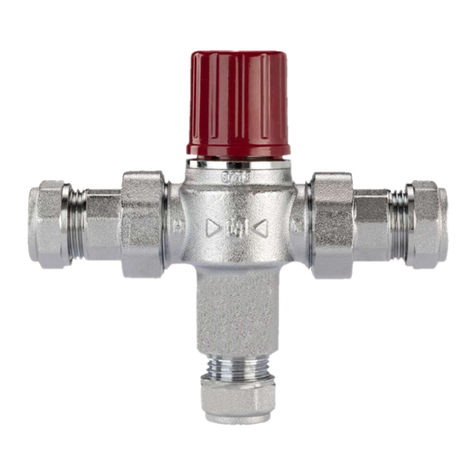
Crane
Crane D1088 Installation, operating and maintanance instructions
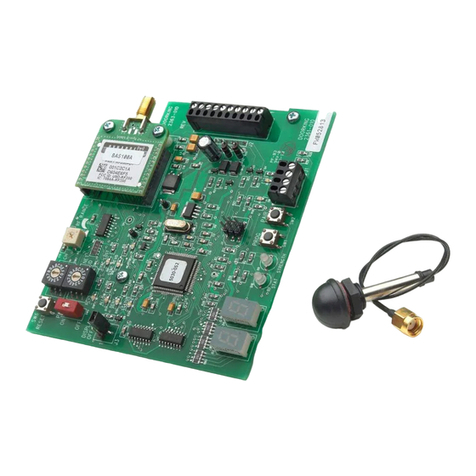
DoorKing
DoorKing 2361-080 quick start
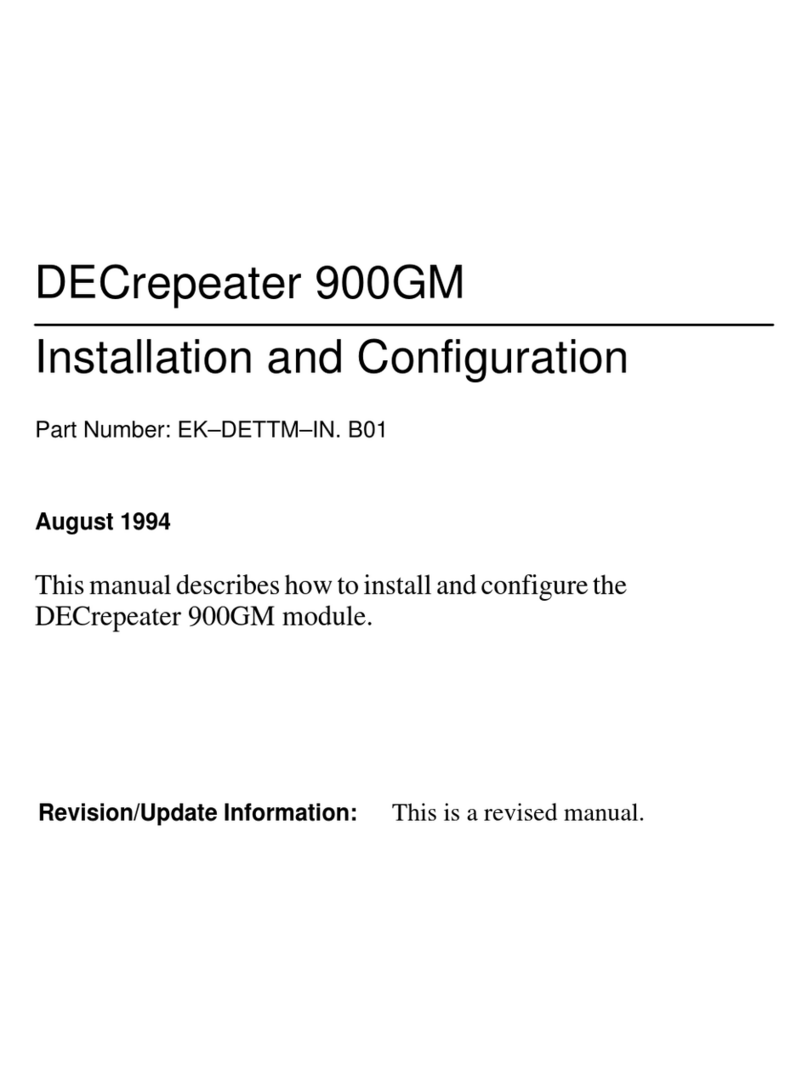
Digital Equipment
Digital Equipment DECrepeater 900GM Installation and configuration
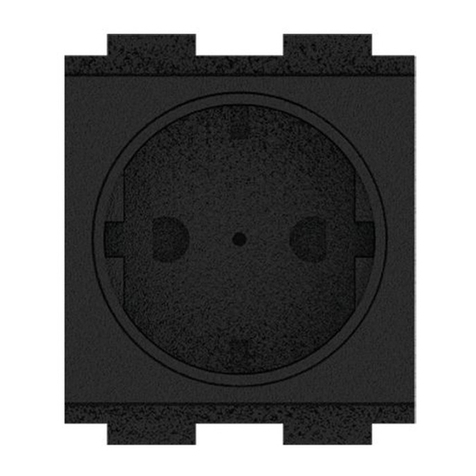
Crestron
Crestron FT2A-PWR 1-C14 Series installation guide
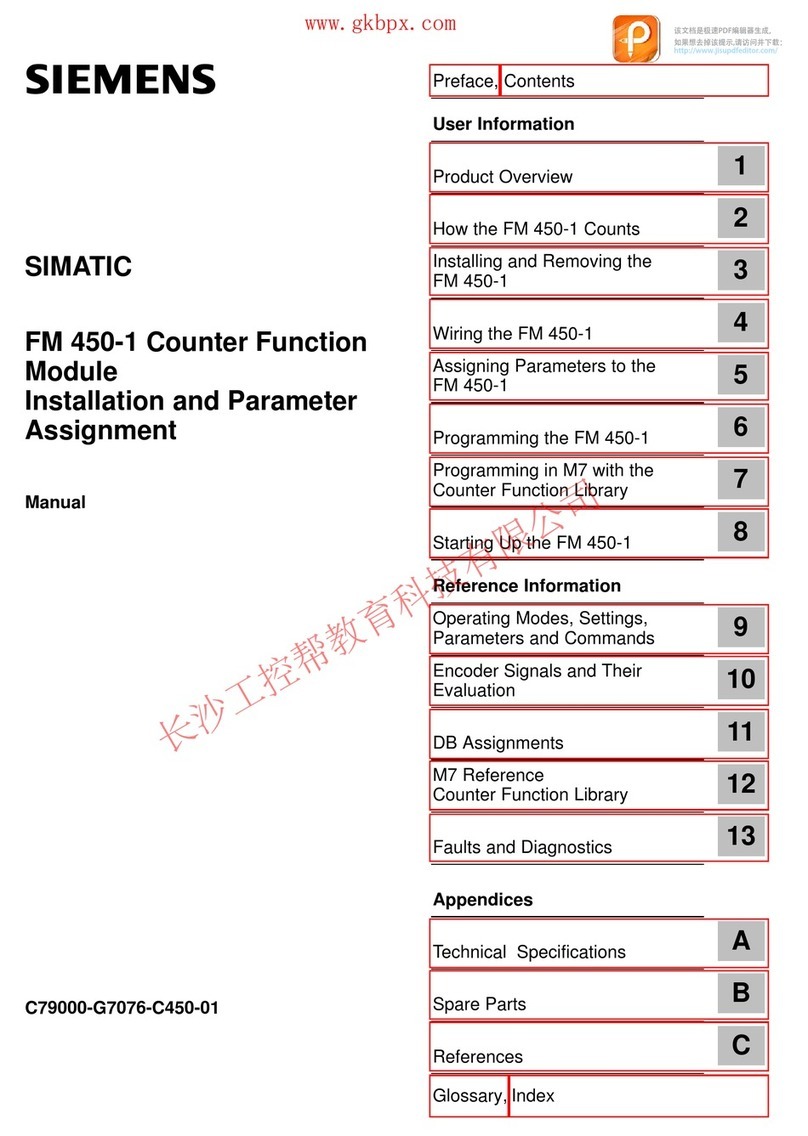
Siemens
Siemens SIMATIC FM 450-1 manual
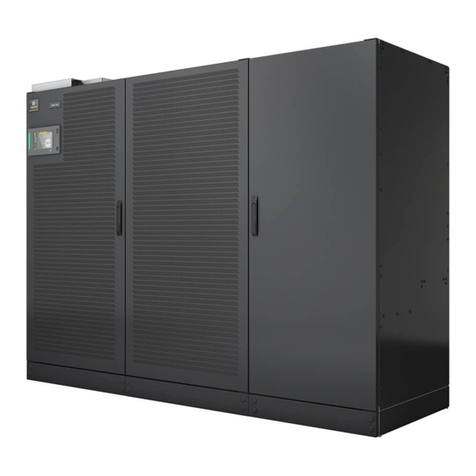
Vertiv
Vertiv Liebert MBSM user manual

Zurn Wilkins
Zurn Wilkins 375 Installation, Testing, Maintenance Instructions
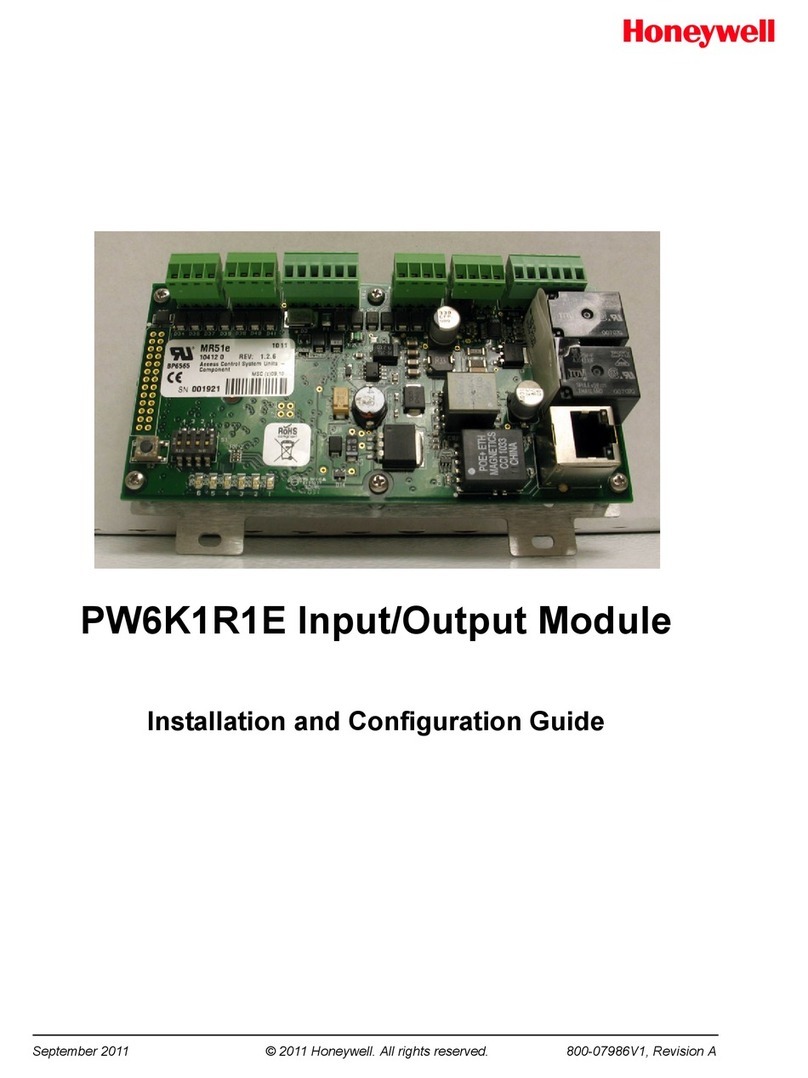
Honeywell
Honeywell PW6K1R1E Installation and configuration guide
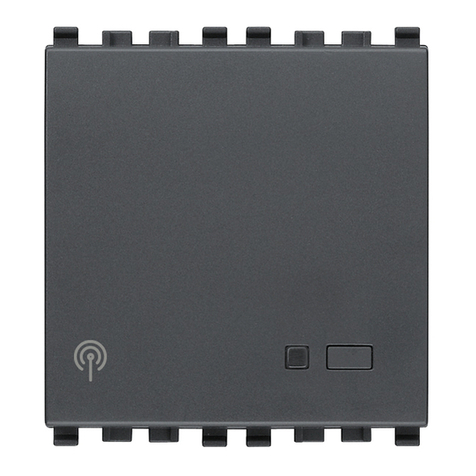
Vimar
Vimar Eikon 20493 instructions
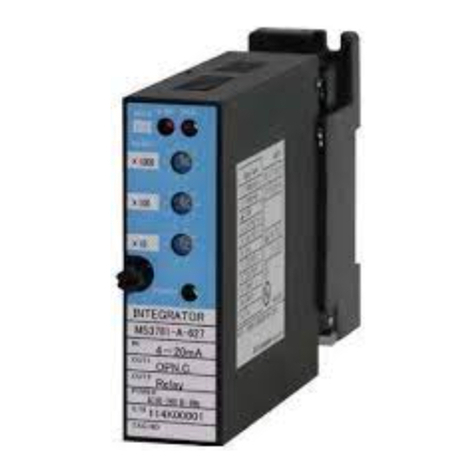
MTT
MTT MS3781 user manual
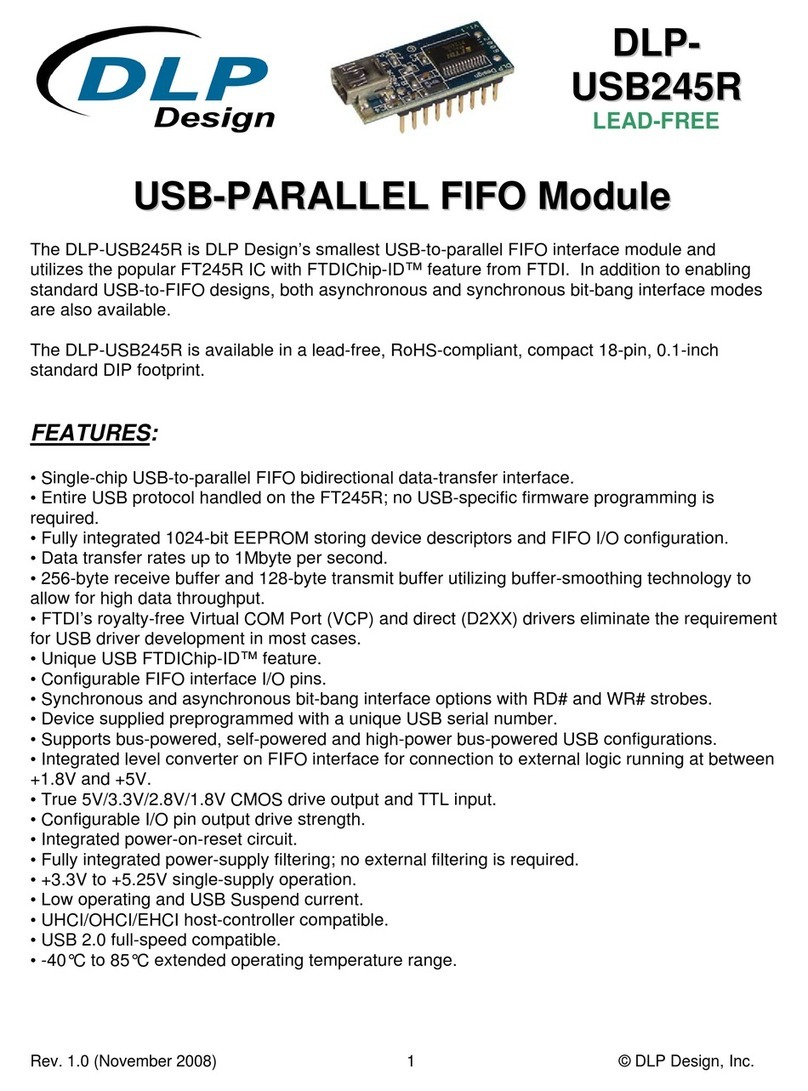
DLP Design
DLP Design USB-Parallel FIFO Module DLP-USB245R user guide
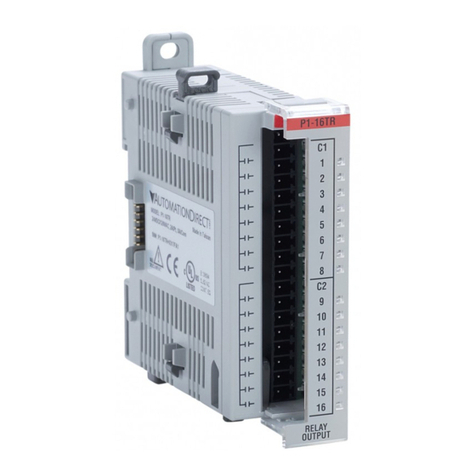
Automationdirect.com
Automationdirect.com Productivity 1000 P1-16TR manual
